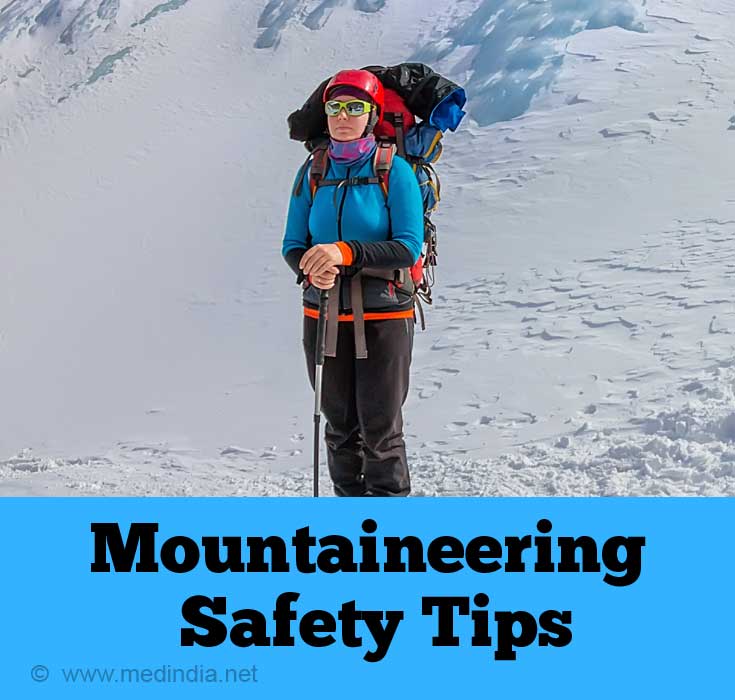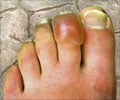- Fischer R. [Hazards of mountain climbing and hiking]. MMW Fortschr Med. 2005 Sep 22;147(38):28-30, 32. Review. German. PubMed PMID: 16218225.
- Schommer, Kai, and Peter Bärtsch. “Basic Medical Advice for Travelers to High Altitudes.” Deutsches Ärzteblatt International 108.49 (2011): 839–848. PMC. Web. 11 May 2015.
- Smith LO. Alpine climbing: injuries and illness. Phys Med Rehabil Clin N Am. 2006 Aug;17(3):633-44. Review. PubMed PMID: 16952756.
What is Mountaineering?
Mountaineering has become increasingly popular across the world and like other adventures sports it’s catching on pretty rapidly in India too. With the country’s northern borders being graced by the mighty Himalayas, Indian mountaineers have easy access to some of the world’s best mountain terrain. It is also home to some of the most unforgiving harsh terrains, where carelessness and oversights can prove fatal.
Just how real are the risks of mountaineering and should we even be concerned?
Popular media tends to grossly exaggerate the risks of mountaineering and the activity is not as high risk as one would assume. This does not mean that it is risk-free. One should never underestimate the hazards of mountain climbing, but the risk varies greatly, depending on the skills of the mountaineer, the expertise of the guide, the quality of equipment, weather conditions, various other factors and most importantly the terrain itself.
For example, climbing Mount Rainier in Washington, United States, is nowhere near as perilous as climbing K2 or Everest in the Himalayas.

Mountaineering Safety Tips
- Never Rely Solely on Others
When it comes to safety, make sure to take responsibility for your own gear, including first aid supplies and oxygen. Be responsible when it comes to making decisions on the ascent and never hesitate to turn around. Most reputed mountain climbers only manage to reach the summit after several attempts as they pay heed to warning signs and turn around at the first sign of trouble. It’s better to fail and stay alive to try again!
- Dealing with Altitude Sickness
Altitude sickness or acute mountain sickness tends to set in once you’ve crossed 8,000 feet and if ignored the condition can be fatal. Stopping the ascent and setting camp for a few days helps you to acclimatize before you continue your ascent. If the symptoms of altitude sickness are severe, it’s best to abandon the climb altogether and to seek medical care. Medications like acetazolamide can help with acclimatization, while paracetamol, aspirin or ibuprofen can treat symptoms like headache. Promethazine should be administered to treat nausea and vomiting as they increase the risk of dehydration.

- Follow the Buddy System
You may have great confidence in your own abilities and levels of self-awareness but in such extreme situations its best to rely on companions around you. Most climbers, no matter how experienced and self-aware, tend to dismiss any symptoms of altitude sickness and may also be dismissive of those who bring them to attention. If you notice that anyone in the group is displaying signs of altitude sickness, make sure that the ascent is stopped and appropriate action is taken.
- Beware of the Weather
The weather may always be harsh and can turn suddenly, but venturing out when the weather is already bad is simply asking for trouble. The change in weather can be fast and unforgiving and hypothermia can sometimes set in within seconds. If you get caught in a snowstorm there is little that you can do as you start to get disoriented and dizzy very rapidly. Check the weather forecasts and pay heed to warnings, as there is not much that you can do once you’re caught in a storm.
- Stay Hydrated
There is a high risk of dehydration, as the air gets increasingly dry at higher altitudes. Dehydration will contribute to and increase your risk of developing other health problems and complications associated with altitude sickness like headaches, edema and as well as frostbite. Confusion and disorientation may also be indicative of dehydration rather than oxygen deprivation or hypoxia. Maintain the required fluid intake while climbing.
- Don’t Forget the Oxygen
Attempting to climb without oxygen is a huge gamble and it’s downright foolish if you haven’t had much experience climbing over 10,000 feet. Even seasoned mountaineers carry bottled oxygen when climbing over 10,000 feet and the few who have climbed without oxygen only do so after following careful programs of acclimatization. Oxygen should also be administered at the first sign of altitude sickness but doing so does not mean that you can continue with your ascent.
- Dealing with Hypothermia
If getting out of the cold into a warm protected place isn’t possible, make sure to protect the person from the wind. Try to keep the neck and head covered to make sure the person is kept warm. Warmth should only be applied gradually, however, never apply warmth to the extremities first. Start with using warm dry compresses on the neck, chest and groins. Never administer direct heat or alcohol. Both may seem like good ideas, but they are not. Apply heat with a towel or some protective material used as a buffer between the heating source and the victim’s body. If the person is conscious you can also offer him/her hot drinks like cocoa milk or other sweetened drinks.
- Dealing with Frostbite
Areas of skin that are affected with frostbite should be warmed gently. Soaking in warm water can help, but make sure the water is just warm, not hot. Never apply direct heat, such as from a stove, fireplace or heating pad as the skin is more vulnerable to burns in this state. Pain medications like ibuprofen may be administered for relief from the pain and inflammation. Make sure that the individual affected with frostbite does not attempt to walk at all if frostbite has affected the feet or toes as this can cause tissue damage. As the skin thaws, you should notice a tingling sensation and will probably observe a reddening of the skin as blood flow returns. If sensations of numbness and pain persist or if blisters appear, medical care will be necessary.
- Dealing with Windburn
Windburn is often confused with sunburn, but it isn’t the same. Irritation, inflammation and peeling of the skin in the case of windburn are caused as a result of low temperatures and dryness. Windburn is better prevented because once it sets in there’s nothing much you can do except for apply emollients and ointments for relief. Instead of waiting till your skin gets affected, use a moisturizing sunscreen to protect your skin from both UV radiation and the cold and dry winds.
- Dealing with Chilblains
Chilblains are often mistaken for frostbite, but they aren’t the same. The itchy swellings that develop on the skin in the extremities like the fingers, toes, ears and nose are usually non-threatening although uncomfortable. Further exposure to cold needs to be avoided however and the condition then resolves naturally within a few weeks. Creams and lotions that are sold for chilblains are actually ineffective and will not help. If you can’t get back to base camp or descend soon enough, nifedipine can be administered to help treat chilblains by relaxing blood vessels and improving circulation. This can also help to prevent chilblains.
- Dealing with Sunburn
As ironic as it may seem, you can suffer sunburn when you’re out freezing in the mountains. In fact, you’re a lot more vulnerable to sunburn because of decreased UV protection at higher altitudes. So, lather yourself in a high SPF sunscreen, just as you would when you’re heading to the beach. In addition to wearing sunscreen, try to make sure that as much skin as possible is covered. If you do suffer sunburn, avoid any further exposure to sunlight until the condition heals. If blistering occurs it means the sunburn is severe and you need medical care. Keep in mind, sunburn is a warning sign and things can get a lot more serious with prolonged sun exposure resulting in sun poisoning or heat strokes.
- Play it Safe
Being an adventure sports enthusiast or mountaineer may appear to make one an inherent risk taker, but that couldn’t be further from the truth. The best mountaineers are extremely cautious and are usually averse to risks. This is especially important when you are engaged in a high-risk activity. Always make sure to be roped and clip in everywhere. Make sure the rope is in good condition and not frayed and avoid putting too much weight on the ropes. Tie into each other when traversing unroped sections. Most fatalities in the Himalayas result from climbers using old rope.
- Ask for Help
Conditions like altitude sickness, frostbite, hypothermia and sunburn can affect the best of us and there’s no shame in asking for help or turning back if necessary. An expedition doesn’t need to be canceled for every crisis and at times all that is needed may be a few days of rest. Listen to the experienced and skilled mountaineers in your group.
- Don’t try to be a Hero
If you’re out there climbing and crossing glaciers in the Himalayas or the Alps, you don’t need to prove anything to anyone. Mountaineering is a challenge in itself without being bogged down by inflated egos. Pay heed to warnings from experts, weather forecasters and locals. There’s nothing much that you can do if you’re caught in an avalanche so avoid situations where you could get caught in one. Don’t go on climbs after there’s been heavy snowfall and avoid climbing across icefall late in the day as the rocks and ice are loosened with melt caused by sunlight during the day.








